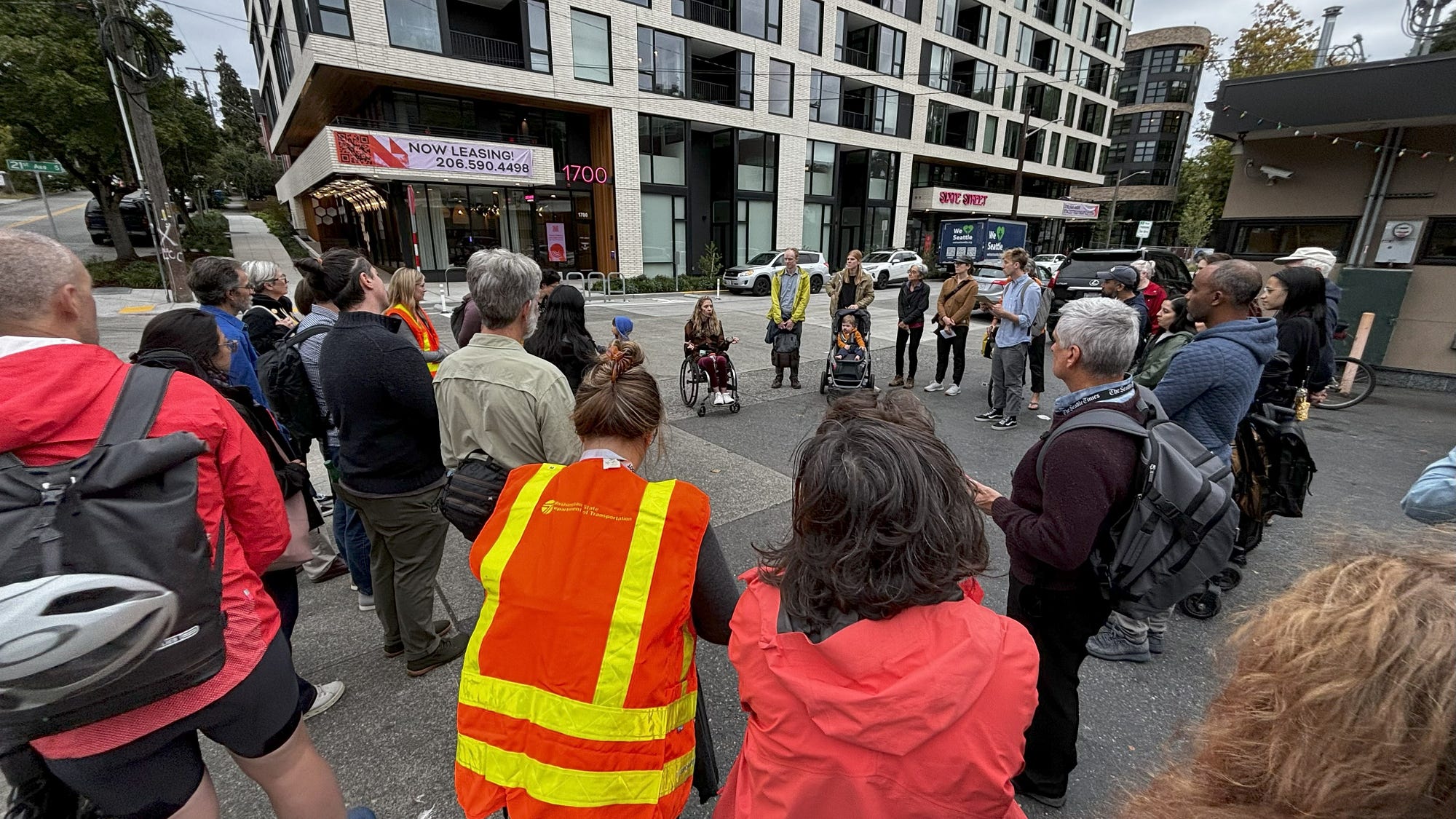Report on Pedestrian Infrastructure Accessibility and its Alignment with Sustainable Development Goals
Executive Summary
This report examines the state of pedestrian infrastructure accessibility in the United States, highlighting its critical role in achieving the Sustainable Development Goals (SDGs). Inaccessible public rights-of-way disproportionately affect persons with disabilities, creating significant barriers to mobility, safety, and community participation. This directly contravenes the principles of SDG 10 (Reduced Inequalities) and SDG 11 (Sustainable Cities and Communities). While regulatory advancements like the Public Right of Way Accessibility Guidelines (PROWAG) represent progress, full implementation and a broader shift in urban planning are required to create truly inclusive and sustainable environments for all.
Analysis of Infrastructure Deficiencies and SDG Impacts
Case Study: Barriers to Inclusion and Mobility
The experiences of disabled individuals navigating urban and suburban environments reveal systemic failures in infrastructure planning. A case study involving a wheelchair user in Washington state illustrates the multifaceted challenges that undermine sustainable development objectives.
- Housing and Transit Disconnect: A lack of affordable, accessible housing near reliable transit forces individuals into locations with inadequate infrastructure, directly impacting their ability to participate in economic and social life, a challenge to SDG 8 (Decent Work and Economic Growth) and SDG 11.
- Inadequate Pedestrian Networks: The prevalence of incomplete, broken, or nonexistent sidewalks forces individuals with mobility devices into unsafe conditions, such as traveling in roadways. This reality stands in stark opposition to SDG 3 (Good Health and Well-being) and SDG 11.2, which calls for safe and accessible transport systems for all.
- Increased Safety Risks: Research indicates that the absence of a sidewalk can increase the risk of a pedestrian crash by 67%. This data underscores the failure to protect vulnerable road users, a key component of SDG 3.6 and SDG 11.2.
The Role of Regulatory Frameworks in Advancing SDG 11
Public Right of Way Accessibility Guidelines (PROWAG)
PROWAG provides a legal and technical framework to ensure new and upgraded infrastructure is accessible, contributing to SDG 9 (Industry, Innovation, and Infrastructure) and SDG 11. The recent adoption of updated PROWAG standards by the U.S. Department of Transportation for transit projects is a significant step towards meeting Target 11.2.
- 2023 Update: After a decade of negotiation, updated guidelines were published, addressing components like curb ramps, pedestrian signals, and on-street parking.
- 2025 DOT Adoption: The Department of Transportation’s adoption mandates these standards for all U.S. transit projects, improving access to public transportation systems.
Gaps in PROWAG Implementation and Scope
Despite progress, significant gaps remain that hinder the universal achievement of accessible infrastructure as envisioned by the SDGs.
- Lack of Universal Enforcement: The Department of Justice has not yet adopted PROWAG, rendering the guidelines unenforceable for non-transit projects, which constitute the majority of public rights-of-way.
- Unaddressed Design Challenges: PROWAG does not yet provide guidance on modern infrastructure designs such as accessible bicycle infrastructure, floating bus stops, or the use of tactile urbanism, creating uncertainty for local transportation departments striving for inclusive design.
- Compliance vs. True Accessibility: Technical compliance alone does not guarantee safety or comfort. An eight-lane, high-speed road with accessible signals may still be a formidable barrier, failing the spirit of SDG 11.7, which calls for universal access to safe and inclusive public spaces.
Recommendations for an SDG-Aligned Approach to Urban Accessibility
Moving Beyond Compliance to Systemic Change
To fully realize the vision of SDG 10 and SDG 11, a paradigm shift is necessary, moving from a narrow focus on regulatory compliance to a holistic approach that integrates accessibility into the core of urban planning and governance.
Strategic Actions for Inclusive and Sustainable Communities
- Integrate Lived Experience into Governance: Public agencies must hire persons with disabilities into key roles, such as ADA coordinators. This practice, exemplified by Pierce Transit, ensures that policy and projects are informed by lived experience, directly advancing SDG 10 by empowering marginalized groups and enhancing the effectiveness of accessibility initiatives.
- Reform Planning and Engineering Education: Academic institutions must embed principles of inclusive design into their curricula and actively recruit and support disabled students. This builds the professional capacity needed to design the resilient and inclusive infrastructure central to SDG 9 and SDG 11.
- Realign Financial Investments with Sustainability Goals: Public funds must be redirected from highway expansion projects, which induce car dependency, towards the construction and repair of connected sidewalk networks, safer pedestrian crossings, and traffic calming measures. This aligns fiscal policy with SDG 3 and SDG 11.2.
- Adopt Sustainable Land Use Policies: Municipalities must rethink zoning policies that segregate affordable housing from essential services and transit. Promoting mixed-use, transit-oriented development is fundamental to building sustainable communities that reduce forced car dependency and ensure equitable access for all citizens, as outlined in SDG 11.
Analysis of SDGs, Targets, and Indicators
1. Which SDGs are addressed or connected to the issues highlighted in the article?
-
SDG 3: Good Health and Well-being
The article connects the lack of accessible infrastructure directly to public health and safety, specifically highlighting the risk of pedestrian fatalities.
-
SDG 10: Reduced Inequalities
The central theme is the systemic exclusion and marginalization of people with disabilities due to inadequate urban planning and infrastructure, which denies them basic mobility and access to community life.
-
SDG 11: Sustainable Cities and Communities
This is the most prominent SDG, as the article discusses multiple facets of urban life, including accessible public transport, safe pedestrian infrastructure (sidewalks, crossings), and the location of affordable housing.
-
SDG 16: Peace, Justice and Strong Institutions
The article discusses the importance of legal frameworks like the Public Right of Way Accessibility Guidelines (PROWAG) and the struggle to have them fully adopted and enforced by government bodies like the Department of Justice, highlighting the need for strong, inclusive institutions and enforceable regulations.
2. What specific targets under those SDGs can be identified based on the article’s content?
-
Target 3.6: By 2020, halve the number of global deaths and injuries from road traffic accidents.
The article directly addresses this target by stating that “inaccessible sidewalks mean that people walking and rolling end up in the street with vehicles, a contributing factor in pedestrian deaths.” It also cites research showing that the absence of a sidewalk significantly increases crash risk.
-
Target 10.2: By 2030, empower and promote the social, economic, and political inclusion of all, irrespective of age, sex, disability, race, ethnicity, origin, religion or economic or other status.
The entire narrative, particularly Krystal Monteros’s story of being “stranded again and again,” illustrates the social exclusion faced by disabled individuals. The call to hire disabled staff and ADA coordinators with “lived experience” is a direct strategy to promote inclusion in planning and decision-making processes.
-
Target 11.1: By 2030, ensure access for all to adequate, safe and affordable housing and basic services and upgrade slums.
This is referenced at the beginning of the article where Krystal was “forced from her apartment when the landlord stopped taking Section 8” and had to undertake a “nearly impossible hunt for a place that was affordable, wheelchair accessible, and near transit.” The article also critiques “zoning policies that exile affordable housing on the outskirts.”
-
Target 11.2: By 2030, provide access to safe, affordable, accessible and sustainable transport systems for all, improving road safety, notably by expanding public transport, with special attention to the needs of those in vulnerable situations, … persons with disabilities…
This is the core target of the article. It details the struggle for accessible pathways to public transit, such as Krystal’s inability to reach a bus stop without traversing a “100-yard mud pit.” The discussion around PROWAG focuses entirely on creating standards for accessible transport infrastructure.
-
Target 11.7: By 2030, provide universal access to safe, inclusive and accessible, green and public spaces, in particular for … persons with disabilities.
The article’s focus on the “public right-of-way,” including sidewalks, crosswalks, and curb ramps, directly relates to this target. It describes how sidewalks that “ended in gravel, vanished into nothing, or were too broken to use” deny universal access to public spaces.
3. Are there any indicators mentioned or implied in the article that can be used to measure progress towards the identified targets?
-
Indicator for Target 3.6: Mortality rate due to road traffic injuries.
The article implies this indicator by discussing “pedestrian deaths” and citing a specific statistic that can be used to measure risk: “the absence of a sidewalk can increase the risk of a pedestrian crash by 67%.” This suggests that tracking pedestrian crash and fatality rates, especially in relation to infrastructure presence, is a key metric.
-
Indicator for Target 10.2: Proportion of positions in public institutions (including at managerial levels) held by persons with disabilities.
The article implies this indicator by celebrating the hiring of an ADA coordinator with “lived experience” and explicitly stating that “local, state and federal transportation departments and transit agencies need to hire disabled staff.” The presence and influence of disabled individuals in these roles serve as a measure of inclusion.
-
Indicator for Target 11.2: Proportion of population that has convenient access to public transport, by sex, age and persons with disabilities.
The article provides qualitative evidence for this indicator through Krystal’s story, where a bus stop is physically nearby but functionally inaccessible. Progress could be measured by auditing the actual accessibility of paths to transit stops for people with mobility challenges, not just their proximity.
-
Indicator for Target 11.7: Proportion of the built-up area of cities that is open space for public use for all.
The article suggests a qualitative and compliance-based version of this indicator. Progress can be measured by the percentage of public rights-of-way (sidewalks, crossings) that are fully compliant with accessibility standards like PROWAG. The descriptions of broken, incomplete, or non-existent sidewalks serve as a baseline measure of the lack of accessible public space.
4. Table of SDGs, Targets, and Indicators
| SDGs | Targets | Indicators |
|---|---|---|
| SDG 3: Good Health and Well-being | 3.6: Halve global deaths and injuries from road traffic accidents. | The rate of pedestrian deaths and injuries, particularly in areas lacking sidewalks (as the article notes a 67% increased crash risk). |
| SDG 10: Reduced Inequalities | 10.2: Empower and promote the social, economic, and political inclusion of all, irrespective of disability. | The proportion of planning and transit agency positions (e.g., ADA coordinators) held by persons with disabilities and “lived experience.” |
| SDG 11: Sustainable Cities and Communities | 11.1: Ensure access for all to adequate, safe and affordable housing. | The availability of affordable housing units that are both wheelchair accessible and located near functional public transit. |
| 11.2: Provide access to safe, affordable, accessible and sustainable transport systems for all, with special attention to persons with disabilities. | The proportion of the disabled population with genuinely accessible routes to public transport stops (e.g., continuous, usable sidewalks). | |
| 11.7: Provide universal access to safe, inclusive and accessible public spaces for persons with disabilities. | The percentage of public rights-of-way (sidewalks, curb ramps, crossings) that are fully compliant with accessibility guidelines like PROWAG. |
Source: usa.streetsblog.org







